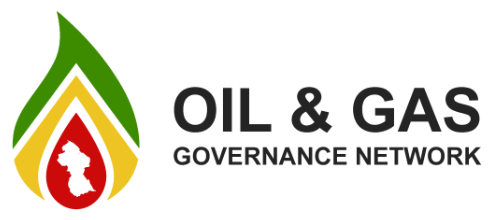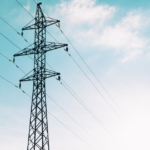Hello Guyanese citizens, in this video, OGGN wants to discuss costs and expenses that Guyana has been incurring since oil production started and will continue over the coming decades.
December 20th, 2020 marked the first anniversary of oil production in Guyana. For this first year, Guyana has earned revenues estimated at US$267.7 million dollars according to the Government of Guyana/Ministry of Finance statistics. But Guyana has already incurred expenses of at least US$18.5 billion that will need to be paid off. Hence, the US$267.7 million is miniscule given our debts.
To put this US$18.5 billion debt in perspective, the total amount of money needed for Government spending for Guyana to operate, such as paying teachers’ salaries and paving the roads, is less than US$2 billion a year. Stated another way, each of the 780,000 people living in Guyana would each owe US$23,700 in expenses. This is an astronomical amount, if we assume a family size of 4 – that would mean each family would owe about US$95,000. But the average Guyanese only earns about US$4,000 a year. That is, each Guyanese family owes 23 times more than they earn in a year.
Guyana has approved 3 oil wells in the Stabroek block to date – Liza 1, Liza 2 and Payara. These wells have 2 major types of costs – capital costs and operating costs. Capital costs are those that were incurred to build the Floating Production Storage and Offloading platforms (FPSOs) – such as the Liza Destiny and Liza Unity ships- from which oil can be pumped up from the ocean floor. Operating costs include all those related costs incurred when the oil companies’ employees operate equipment on the FPSOs to bring up the oil from Guyana’s seabed. Other operating costs include separating the water and other impurities from the oil as it is pumped into the FPSOs, drilling, surveying, transportation, etc. Some typical oil costs are – Investment and Lease Costs (in the Exploration stage); Operating Costs, Maintenance Costs & Environmental costs in (in the Exploration, Development & Operations stage); and Closure, Post-Closure and Disposal Costs (in the closure stage when wells are being decommissioned).
The only well in production as of January 2021 is the Liza 1, so that is the only oil well where we have incurred operating costs to date. The capital cost of Liza 1 is estimated at US$3.5 billion. The capital cost projected for Liza 2 is about US$6 billion. The capita cost for Payara is projected to be US$9 billion. That amounts to a total of US$18.5 billion in capital costs for 3 offshore projects. But there are at least 15 more wells to be approved in the Stabroek block. If we use the average of the first 3 wells to estimate how much we would owe for the 18 wells, the grand total amount would be approximately US$111 billion. That amount of US$111 billion is more money than all Guyanese living in Guyana combined have earned since Guyana gained independence in 1966.
While investors have spent their funds up front for exploration and development, all the costs and expenses will be paid back by Guyana from the sale of oil, and the investors profits will be huge, given their very lucrative contracts.
Even before the capital costs, there were other costs incurred during exploration for oil – those are known as pre-contract costs. For the Stabroek oil block, the initial estimate of pre-contract costs was US$460 million. Those include exploration expenses going all the way back to 1999 including costs for drilling wells and analyzing the results to see if oil exists. There have been serious questions raised whether those expenses were accurate. The Government of Guyana engaged a foreign firm in December 2019 to audit those expenses. The foreign firm has taken more than a year to complete the audit. Auditing is where the oil companies incurring the expense have to show proof, such as paper invoices, for the expense. Auditing does not mean the expense was appropriate for the activity undertaken. For example, auditing would not raise concerns about why expensive airline tickets were purchased by the oil company employees to fly to Guyana.
The deadline to audit the capital costs for each oil well is only 2 years, unless oil companies agree to an extension. Given the time spent on auditing the pre-contract costs, it is likely the government would run out of time to audit the much larger US$3.5 billion capital costs for Liza 1. It would be in the best interests of the Guyanese people to audit Liza 1 thoroughly because the initial capital cost was estimated at US$4.4 billion by the oil companies then reduced by US$700 million when prominent Guyanese activists questioned the figure. Then the figure was reduced again to its final amount of US$3.5 billion.
While Guyana earned only US$267.7 million on our oil last year, the oil companies and their partners earned significantly more. This is because approximately 74 barrels out of each 100 barrels is allocated to the oil companies to pay their capital and operating expenses. While these are expenses charged to Guyana, a big part of that are actually salaries for the oil companies and their partners. What this means is, last year the oil companies’ employees and their partners gained at least US$1 billion, from pumping our oil, while Guyana only earned about US$267.7 million.
Guyanese, the information provided here on costs and expenses should cause everyone to reflect on the fairness of the contracts we have with our oil companies, especially when the oil companies are getting almost five times the revenue of what Guyana gets. It is always the expectation that a country should get the biggest share of the profits and benefits from its resources, and oil companies should get a fair share on their investments.
Government leaders need to ensure there are stronger regulatory frameworks, and capacity building to audit the oil costs being submitted by the oil companies, as it involves huge expense accounts. Inadequate and inefficient auditing may result in Guyana losing tens of millions of dollars annually.






